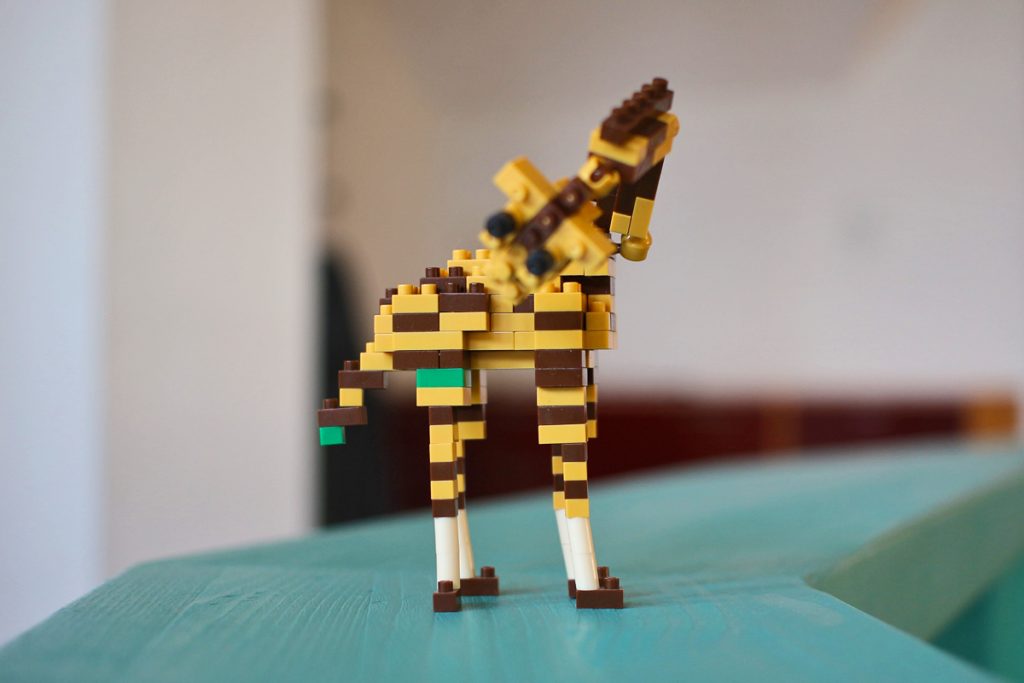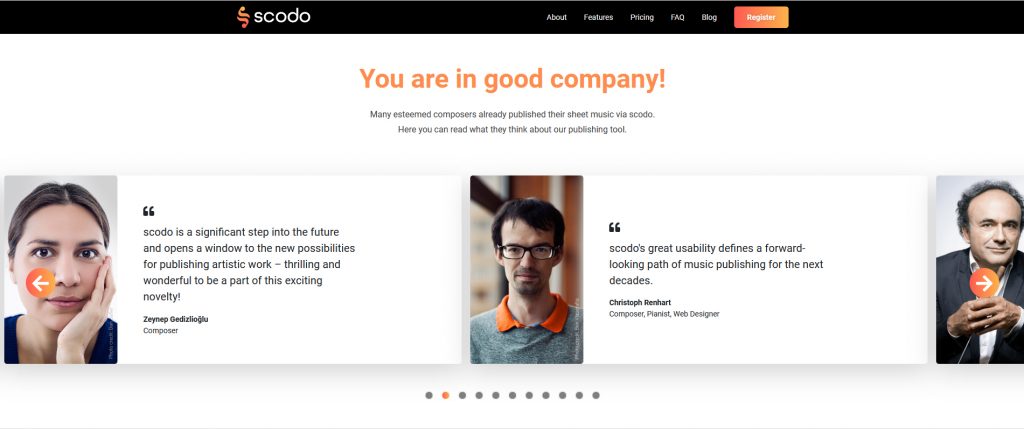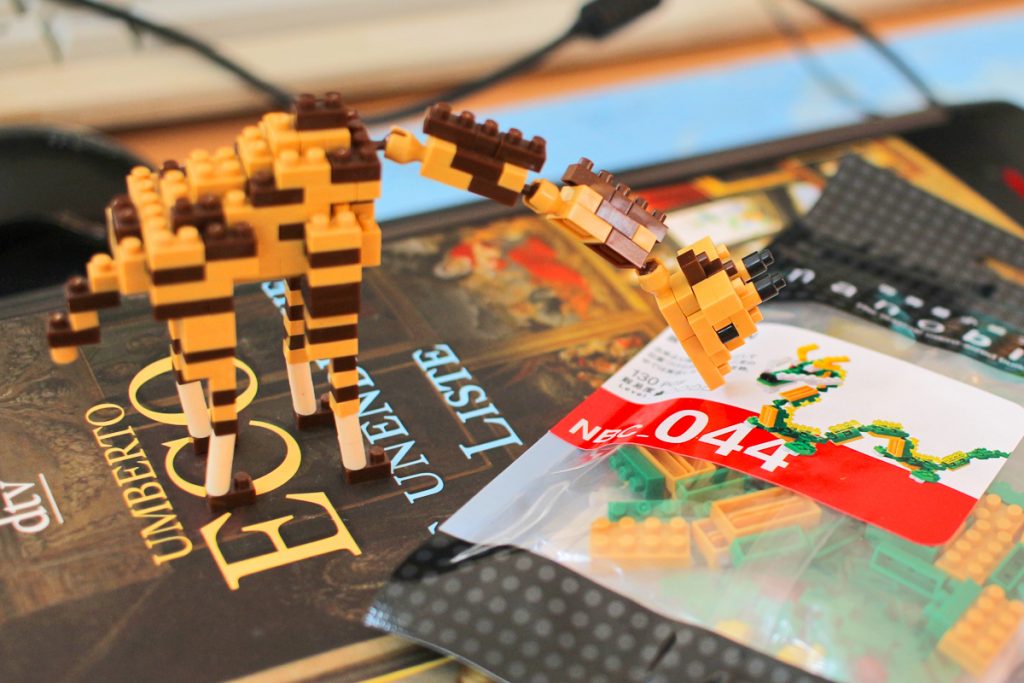
Pentathlon —
A story with the little giraffe
It’s about time to introduce a new figure: Fünffusssaurus. For reasons too obvious to mention we will not translate this into English. Fünffussaurus was purchased a while ago for ten-something at an online store. Before it was mounted—guarded by the severe look of the little giraffe—it remained quarantined for some days, just to be sure LPG doesn’t contract the dragon’s flue (which would be unimaginably frightening). As every construction kit is delivered with some extra building blocks, I chose to deviate a little from the construction manual; hence the name. Originally this was meant to be a dragon, but now it rather looks like a worm, though. A wyvern without wings. A lindworm-centipede-crossbreed. Whatsoever.
Locking horns
Once ready to become subject to this very blog, we’d like to get to know to our new figure a little bit closer. Let’s stage a competition and see which tiny beast performs better, Fünffusssaurus or the local heroine, LPG. There are five categories—quasi the pentathlon for the pipsqueaks—in which Fünffusssaurus will challenge the little giraffe: Height, width, flexibility, fragility and popularity. Let’s start with the first match.
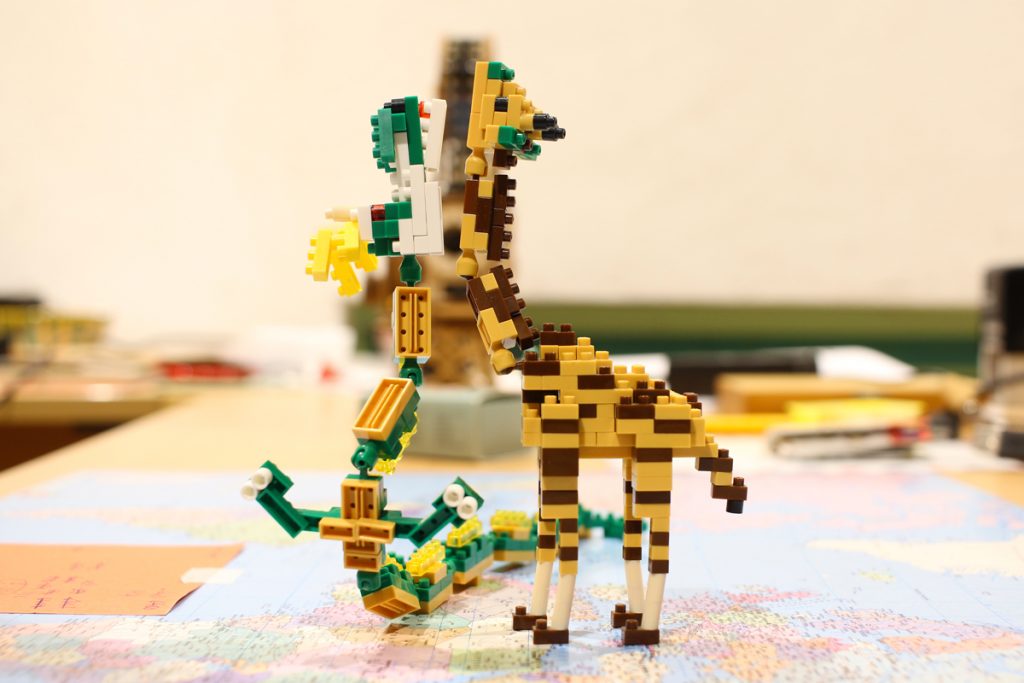
Height
Let’s face it: giraffes are known to be … tall. There is no chance for Fünffusssaurus of winning this stage, is there? Have a look at the picture. While Fünffusssaurus keeps struggling with mother gravity to gain some extra inches, LPG is stablest when raising her nose up to the skies. A clear point for the crowd favourite.
Preliminary result:
![]() (1)
(1)
![]() (0)
(0)
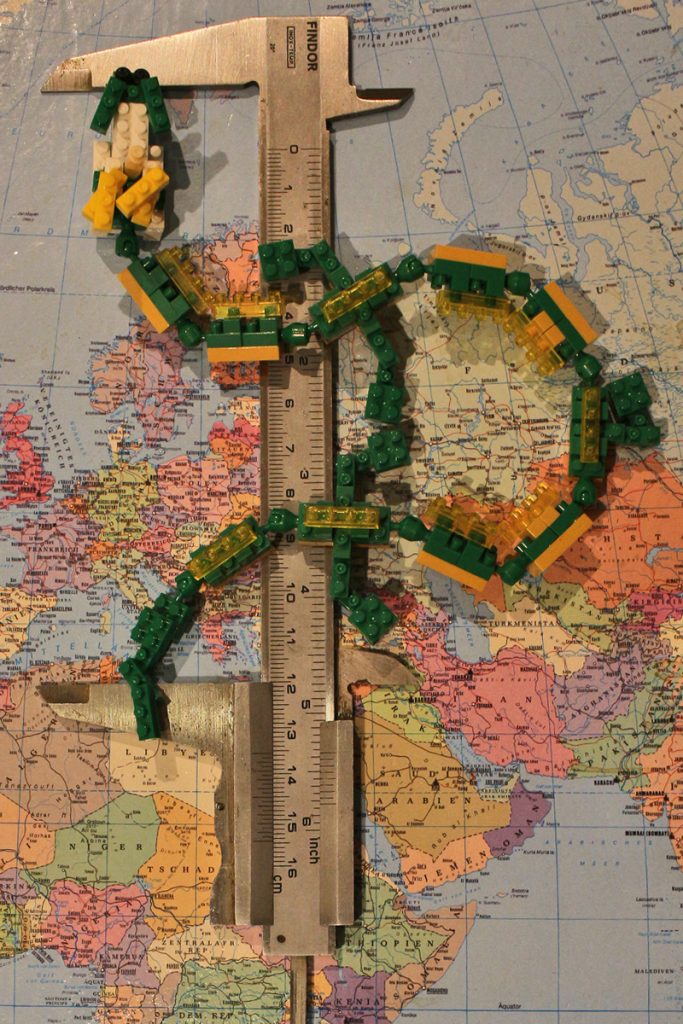
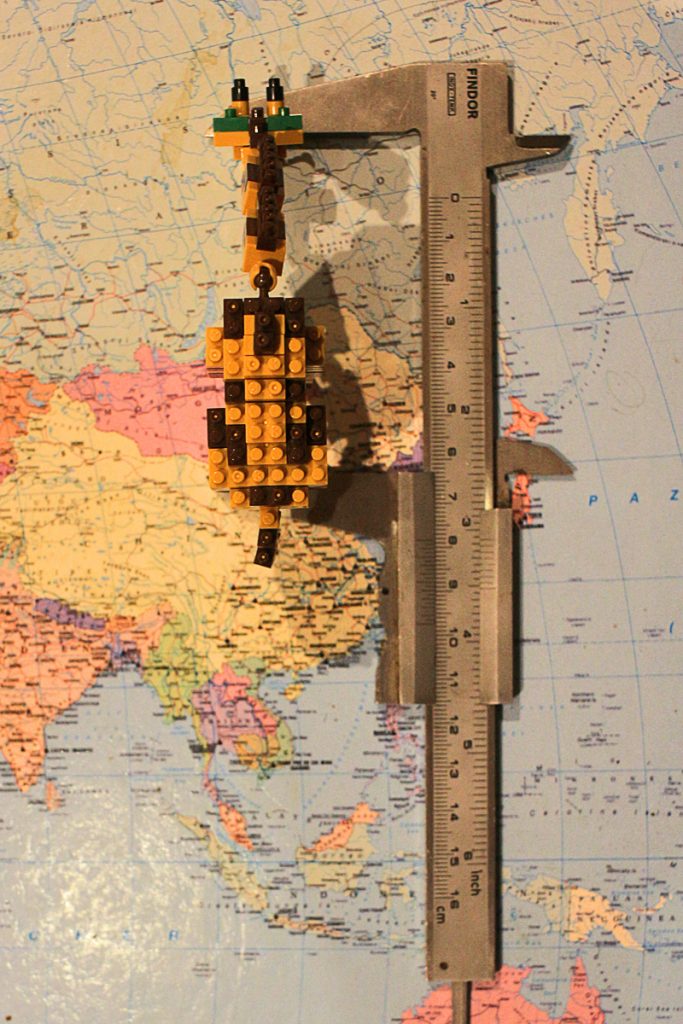
Width
Fünffusssaurus captures a very decisive victory. If we look at the image, LPG measures 2.5 inches from ground to ground, whereas FFFSSS exceeds the range of the meter. Frankly, it was rather challenging to somehow fit FFFSSS into the meter. Other than that, the little giraffe reaches from the Yangtze River to the Amur River, but FFFSSS spreads all over the EU, Russia, Kazakhstan and Africa as well.
Preliminary result:
![]()
![]() (1)
(1)
![]()
![]() (1)
(1)
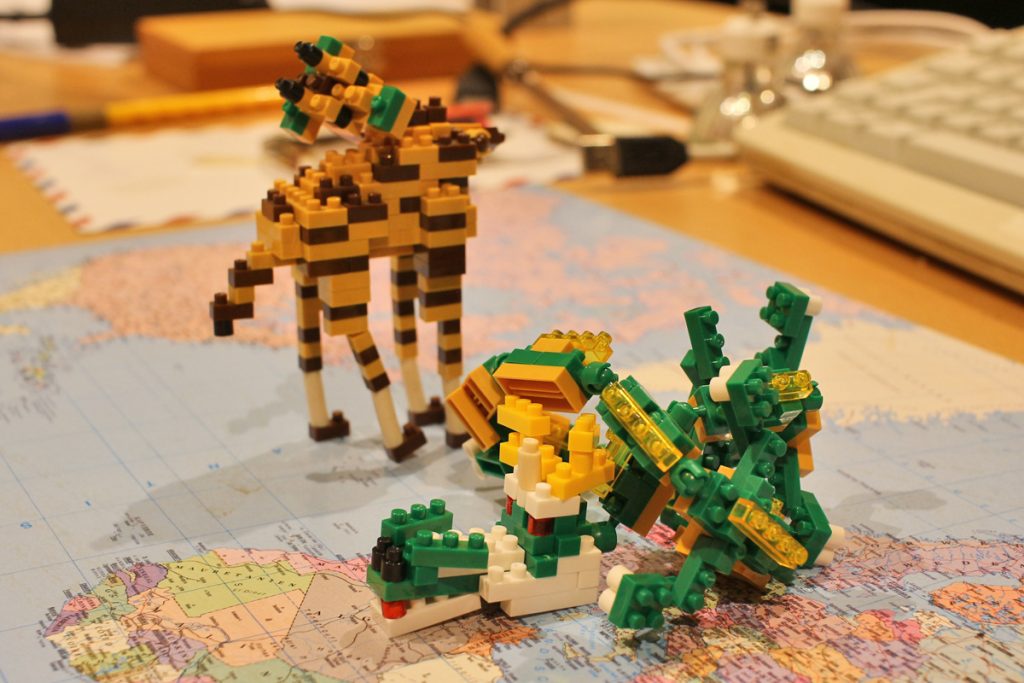
Flexibility
Let’s see, which of the two has a more dislocatable body and is overall more flexible. We already know that the little giraffe is very flexible. But how about FFFSSS? Let’s get down to it and count their joints. The little giraffe comes up with three ball-and-socket joints, all of them are sited at its neck. However, FFFSSS boasts about its tremendous amount of eleven such joints. Apart from that, also its feet are movable, no less than its tail and its horns. Thus, there is no need to dispute who’s gonna win this round, just have a look at the picture to verify the results.
Preliminary result:
![]()
![]()
![]() (1)
(1)
![]()
![]()
![]() (2)
(2)
Fragility
It is self-evident that LPG is rather fragile than indestructible. However, the same is true of our new friend, FFFSSS. We might count all possible items of each character that are likely to get lost. We might also take into consideration that the little giraffe is so fragile, it can’t even stand at all, once one of its legs is broken again. We might also observe, that FFFSSS has five feet that stick together but loosely whereas its underjaw is keen to fall off like a denture at any moment. I would like not to declare LPG or FFFSSS the winner of this match, though, for both competitors are just way too fragile to make a call. It’s a draw.
Preliminary result:
![]()
![]()
![]()
![]() (2)
(2)
![]()
![]()
![]()
![]() (3)
(3)
Popularity
Finally when it gets down to popularity, the little giraffe remains undefeatable thus far. FFFSSS has not recieved fanpost yet, whereas LPG has (indeed!). Giraffes are somewhat popular animals and when people see that they are occasionally fed to the lions in a zoo in Copenhagen for instance, many people get upset easily. As for FFFSSS, the popularity of a hitherto undiscovered species is undefined or null.
Final result:
![]()
![]()
![]()
![]()
![]() (3)
(3)
![]()
![]()
![]()
![]()
![]() (3)
(3)
